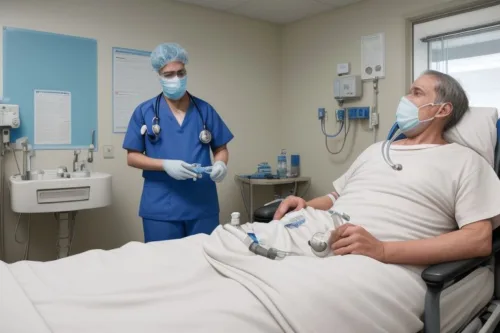

Introduction to Nash Cirrhosis
Nash Cirrhosis, also known as Non-Alcoholic Steatohepatitis (NASH), is a chronic progressive liver disease that is associated with obesity and insulin resistance. It is caused by excess fat stored in the liver cells, which leads to inflammation and scarring of the tissue. Over time, this damage can eventually lead to liver failure and even death. Nash Cirrhosis is one of the most common forms of advanced liver disease affecting the world today.

Causes and Risk Factors
Nash Cirrhosis is a multi-factorial condition that is associated with a number of lifestyle and genetic factors. Primary causes and risk factors include:
- Obesity
- Insulin resistance
- Metabolic syndrome
- Type 2 diabetes mellitus
- Excessive consumption of carbohydrates, fats and alcohol
- Genetic predisposition
- Certain medications, such as corticosteroids
- Smoking
- HIV
- Infections

Signs and Symptoms
The early stages of Nash Cirrhosis are typically asymptomatic, as the condition may not be diagnosed until more advanced stages. If symptoms do appear, they can include:
- Fatigue
- Abdominal pain
- Loss of appetite
- Nausea and vomiting
- Weight loss
- Muscle weakness
- Itching
- Fever
Diagnosis of Nash Cirrhosis
A diagnosis of Nash Cirrhosis can be made with a combination of blood tests, imaging tests, and a liver biopsy. Blood tests such as liver enzymes and liver function tests can detect any abnormalities in the liver. Imaging tests such as an ultrasound or computed tomography scan will demonstrate any scarring or fatty deposits in the liver. Finally, a liver biopsy can be used to confirm the diagnosis of Nash Cirrhosis.
Treatments for Nash Cirrhosis
The most important treatment for Nash Cirrhosis is control of the underlying medical conditions. Dietary and lifestyle modifications can help to reduce the risk of further damage to the liver. In addition, medications such as diuretics, corticosteroids, and anti-fibrotic agents can be used to reduce inflammation and stabilize the condition.
Complications Associated with Nash Cirrhosis
As Nash Cirrhosis progresses, it can lead to a number of serious complications including:
- Liver cancer
- Ascites (fluid buildup in the abdomen)
- Esophageal varices (enlarged veins in the esophagus)
- Hepatic encephalopathy (damage to the brain caused by toxins)
- Kidney failure
Effects on Organ Function
Nash Cirrhosis can cause a number of problems with normal organ function. These can include:
- Fatty liver – Fat deposits in the liver can lead to inflammation and scarring, which can interfere with normal organ function.

- Jaundice – This is a yellowing of the skin and eyes caused by an accumulation of bilirubin in the bloodstream.
- Gallstones – Gallstones can form when bile accumulation occurs in the gallbladder, leading to abdominal pain.
- Portal hypertension – This is a buildup of pressure in the portal vein, which can lead to serious complications such as bleeding in the esophagus, stomach, or intestines.
Prognosis for Patients With Nash Cirrhosis
The prognosis for patients with Nash Cirrhosis depends on many factors, such as age, overall health, and the severity of the condition. In the early stages, Nash can be managed with lifestyle changes and medication, but in advanced stages it can cause serious complications, leading to organ failure or death.
Lifestyle Considerations and Management
Managing Nash Cirrhosis requires lifestyle modifications such as decreased alcohol and carbohydrate intake, weight loss, exercise, and stress management. Additionally, it is important to monitor blood glucose levels and cholesterol, as both of these can increase the risk of complications associated with Nash Cirrhosis.
Alternatives to Drug Treatments
In some cases, drug treatment may not be an option for patients with Nash Cirrhosis. For these patients, alternative treatments may include:
- Diet and Nutrition – Eating a healthy diet that is low in carbohydrates and fats can help reduce liver fat and improve symptoms.
- Herbal Remedies – Certain herbs and supplements can be used to reduce inflammation and improve liver function.
- Acupuncture – This ancient Chinese practice involves the insertion of needles into specific points on the body to relieve pain and promote healing.
- Yoga – Practicing yoga can help to reduce stress and improve overall wellbeing.
Clinical Trials for Nash Cirrhosis
There are currently several clinical trials underway to investigate new treatments for Nash Cirrhosis. These trials are focusing on using drugs to reduce liver fat and protect liver cells from further damage. Additionally, researchers are investigating new drugs to improve quality of life and reduce complications for patients with Nash Cirrhosis.
Support Groups for Nash Cirrhosis
Living with Nash Cirrhosis can be a challenging experience. Fortunately, there are many support groups available for patients and caregivers. These groups provide emotional support and practical advice for people living with liver disease. Additionally, they offer educational resources and advocacy to raise awareness of Nash Cirrhosis and other related conditions.
Prevention of Nash Cirrhosis
The best way to prevent Nash Cirrhosis is to maintain a healthy lifestyle. This means eating a balanced diet, keeping active, and not smoking. Additionally, it is important to monitor and manage any existing health conditions such as obesity, diabetes, and high cholesterol.
Nash Cirrhosis is a chronic progressive liver disease that is caused by excess fat accumulation in the liver cells and associated with obesity and insulin resistance. It can be diagnosed with a combination of blood tests, imaging tests, and liver biopsy, and is typically treated with lifestyle modifications and medications. Although Nash Cirrhosis can lead to serious complications, it can be managed with lifestyle changes, medications, and alternative treatments.
Additionally, there are several clinical trials underway to investigate new treatments for Nash Cirrhosis. With proper management, patients with Nash Cirrhosis can maintain a good quality of life.
Nash Cirrhosis is a serious but manageable condition with potentially life-threatening complications. It is important to take proactive steps to prevent Nash Cirrhosis, such as maintaining a healthy lifestyle and managing any existing medical conditions. Additionally, Nash Cirrhosis patients should be aware of the treatments and support resources available to help them manage the condition. With early diagnosis and proper management, Nash Cirrhosis can be controlled and the prognosis for patients is promising.



